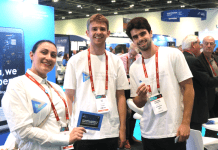A new building planned for the University of Cambridge will use cutting edge BIM technology during the construction process
The scope of building information technology (BIM) and how it can deliver quality will be showcased in the construction of a new building.
The Triangle, which will be the new international headquarters for the University of Cambridge’s examinations group Cambridge Assessment, will show how the effective use of BIM can benefit all stakeholders in a project, while delivering a high standards.
The building is expected to open in 2018 and will bring together all staff based in Cambridge under one roof, rather than scattered across 11 different sites. Some 3,000 members of staff are expected to be housed there.
The Triangle will stand some 39m and will be visible on the south approach into Cambridge. The plans comprise of office space, catering areas, archive facilities, meeting rooms and outdoor spaces for both work and relaxation.
The building will boast a sustainable design that will utilise cutting-edge techniques in the building process such as chilled beams and modular installations.
BIM will form part of the construction process
Bouygues UK is to undertake the £120m contract to build The Triangle and were keen to utilise BIM in the process.
Bouygues UK M&E manager Brian Brewis said: “When used to best advantage, BIM is every bit as much about the modelling and integration of optimal construction process and logistics, as it about modelling the building itself.
“We are delighted at the enthusiasm for BIM applications that has been shown by our partners on this project, and together we have been realising the benefits of BIM best practice, such as optimised logistics, warehousing and delivery schedules, from the outset.”
BIM is undoubtedly a key component of any building project and is growing from strength to strength in the industry since the government mandated level 2 last year. Projects such as this show why the technology is so useful and how it has the potential to save money while creating more streamlined projects.













